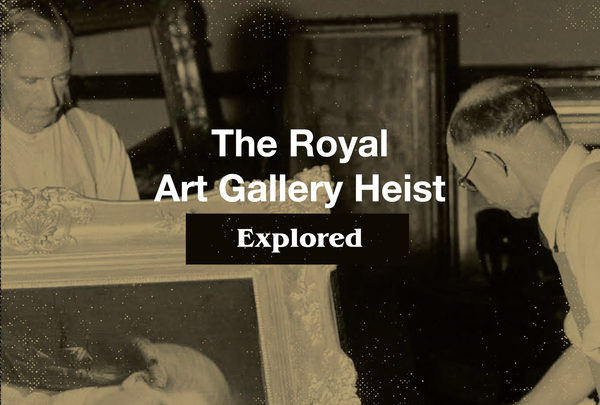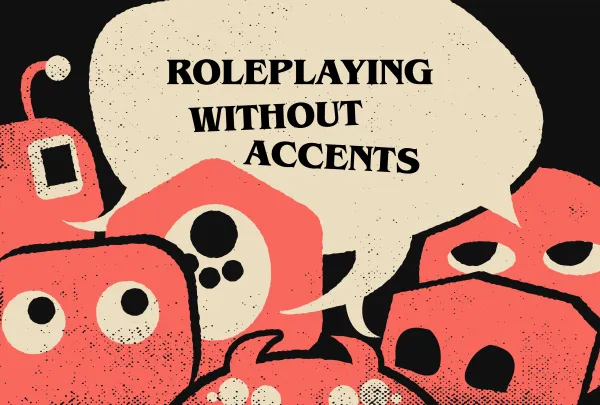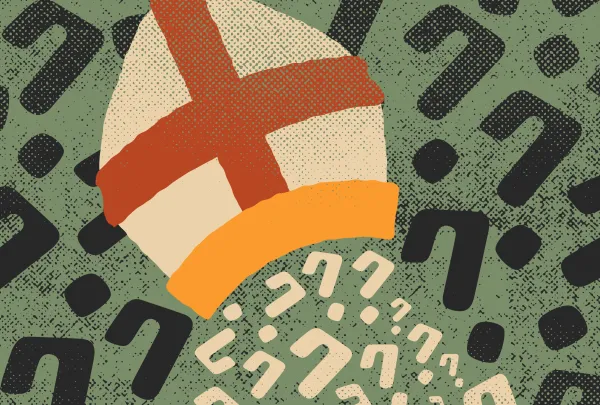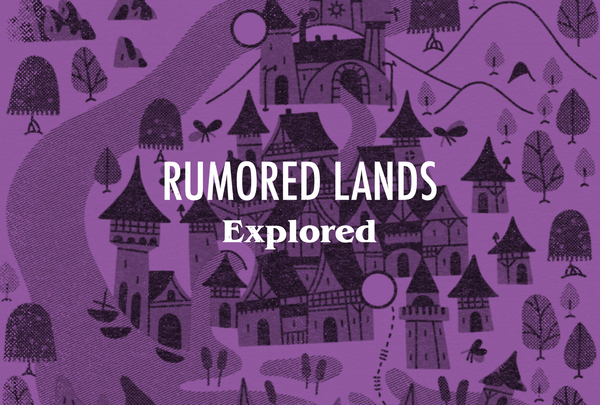Design Your Locks With More Keys
Every adventure's puzzle should have multiple solutions. In this article, we figure out how to give all of our metaphorical locks a ring of keys.
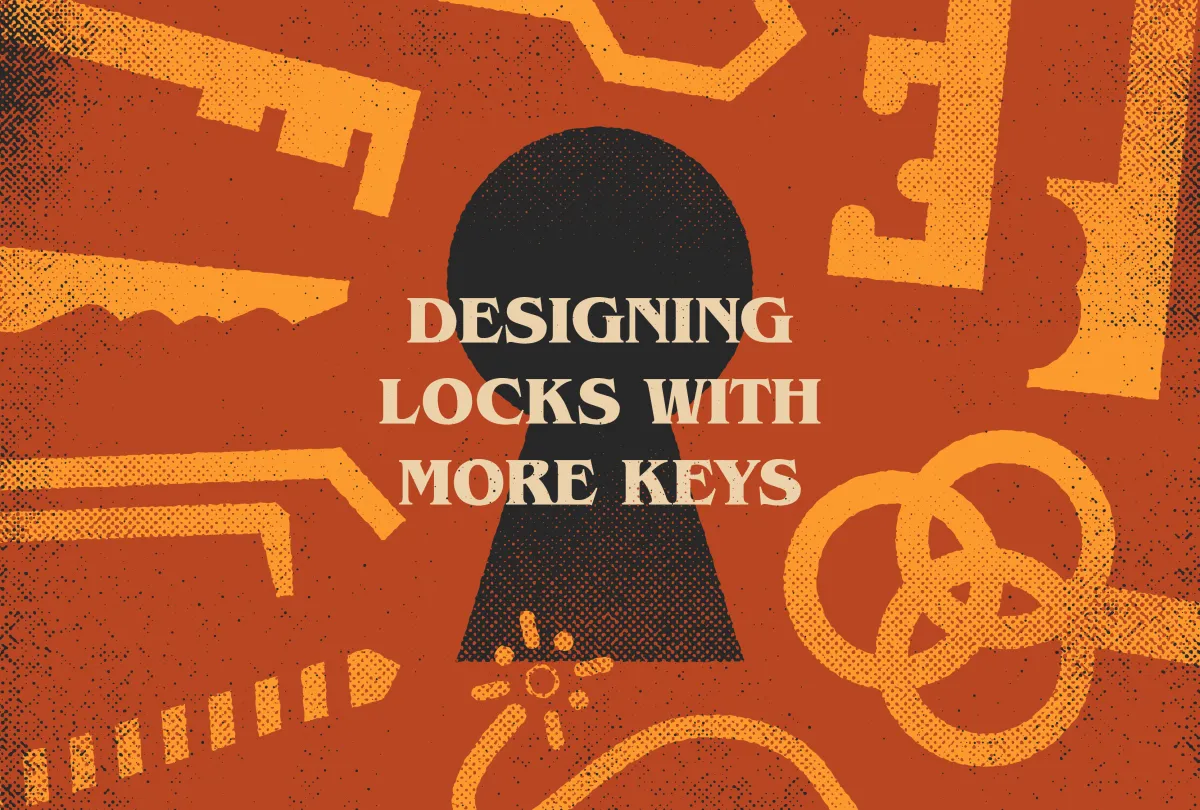
Puzzles with many solutions.
I've been busy in the background designing my first public adventures. One for Troubleshoot and another for Cairn 2E. In those adventures, I'm designing my favorite thing in all adventure games—puzzles. Not jig-saw puzzles, or Rubik's Cubes, but open-ended problems or obstacles with no prescribed solutions.
This has been written about at length in the blogosphere. Arnold K's inimitable Goblin Punch wrote an explanation of it in 2016. Interestingly, he lists a number of requirements (some of them less prominent in the discourse than others):
- Many possible solutions. This is the one everyone remembers.
- Solvable via common sense. To clarify: solvable with in-fiction logic.
- No special tools required. Emphasis on "special." More on this later.
- Not solvable by a class ability. Fiction-waving abilities. In-fiction is fine.
- No obvious solutions. This is the one I remember the least.
If you're interested in how to make these kinds of challenges, Rise Up Comus has an entire chapter on it in his Designing Dungeons Course with Warren D.
Thinking of solutions as keys.
The title of this article takes heavy inspiration from Widdershins Wanderings' A Lock with No Key. In it, Derek sorts problems into one of two categories: hard locks and soft locks.
A hard lock is any obstacle that requires a specific solution, or key, to overcome it. This is your classic Metroidvania door or Legend of Zelda puzzle—the kind that can't be overcome until you have the chain whip, hook shot, or literal boss key.
A soft lock is the opposite of the hard lock. It has many solutions or keys and is what you'd expect from Arnold K's description of old-school style challenges. It's the literal door that can be unlocked, picked, or hacked to splinters, and it's the less literal lock of the invisible monster you can't see but must overcome.
I'm going to focus on soft locks because those are what I like most and what I'm trying to pack my adventures with.
Some clarifications on problems and solutions.
In Arnold K's description of OSR challenges, he bars special tools and class abilities, but he doesn't mean players can't use crowbars to overcome a locked door, or that Conan the Cimmerian can't kick a door down with his obscene strength. His article was written in 2016 just two years after the release of Dungeons & Dragons 5th edition, back when Pathfinder 1E and D&D 3.5 still loomed large over the hobby and its many play cultures.
Arnold K is suggesting we don't include "skeleton keys" in our design. Skeleton keys, defined by Widdershins Wanderings, are keys like the Knock spell, Create Food & Water, Remove Curse, or Detect Secret Doors.
Skeleton Keys open all hard locks and soft locks, regardless of the specific context or fiction surrounding them. They live, operate, and succeed in the meta layer of play. Steamrolling or eliminating certain storytelling beats in the process. Tropes like surviving on a desert island, finding a secret door, or going on a quest to remove a friend's curse cannot exist in a game with 3rd-level D&D spells. It was a conundrum so prevalent in the '80s that TSR often made certain spells not work in their adventure modules, for no believable in-fiction reason, except to protect the challenge as it was presented in the module. Dark times.
Design every lock its ring of keys.
The broad (but not precisely agreed upon) consensus of old-school play is that the best challenges have many potential solutions. Some of them are built into the adventure proper and the rest are imported through campaign play, character backstories, equipment, and good ole' player ingenuity.
That last cadre of solutions is a deep pool of possibilities. Even the most basic adventuring parties pack torches, weapons, and a few spells. Over a hundred possibilities are loaded into those things alone. So, you could reason that you almost don't need to add keys to an adventure to accomplish our preferred style of play. You could design locks where even you don't know the solution. Ones that players bring their own proverbial gunpowder to unlock.
If you're still reading, you know I'm going to suggest the opposite. So, let's assume you want to write an adventure that features osr-style challenges...
When we design locks in our adventures, we should supply every lock with a ring of keys.
Why? Because keys reinforce the adventure's themes, provide texture, and make dungeons feel like living, breathing places. Because what is a key? It's anything thematic players can interact with and bring to bear.
Counterpoint, "But won't giving every puzzle multiple built-in solutions feel too gamified, too convenient, and too forced?" Not if we design our keys to do double duty as set-dressing, monsters, lore, etc. Think of your dungeon's locks like recipes for interaction. Every lock has different keys, every key has its own flavor, style, and preferred cooks.
Here's a small list of proverbial keys for your key ring:
The Perfect Key (An obvious solution.)
Arnold K's rules for obstacles suggest not to have a perfect key lying around. After all, the absence of obvious solutions telegraphs to players, "It's time to get creative." That said, I think there's some rationale for including them:
- Perfect keys can bait obstacles. The key on a guard's belt when locked in a cell is a problem and solution all at once. How do you get that thing off them? Sometimes perfect keys nest one problem's solution in another's problem.
- Perfect keys can be a reward. Maybe the key was something hard to get or unlikely to be won without player action? Easy solutions born out of previous decisions can make the world feel like a living and breathing place.
- Perfect keys can act as failsafes. Some tables get stumped easily. A perfect key can be a solution that reveals itself later—somewhere far away from the problem, where less creative players will inevitably stumble into it.
The Bloody Key (The costly solution.)
It'll get the job done but not without a cost. This key escalates thing. It presents players with a choice and then gives them the opportunity to sign up for the consequences. The trick to this key is that it can't be opaque, the danger must be telegraphed, even if its exact outcome is a mystery.
- Bloody keys trade problems. The jar of pig's trotters would lure The Hog Devourer to the orcs... but it wouldn't lure it away. Do the players trade one problem for another? "Smells like pig. Tastes like paradise. Open responsibly."
- Bloody keys whittle you down. The solution won't leave the players stronger, but maybe they can handle it. It's the underwater passage that forces characters to leave their armor or the rocky cliff that cuts up their hands.
- Bloody keys are slot machines. Some players love to gamble. This key is a 50/50 shot at payout or pain. Ramming a door with a statue, for example. Maybe it scares those frog-dog wizard cultists. Or maybe they zap you.
The Lockpick (A skillful solution.)
The players will come to the table with lockpicks of their own. They'll come up with solutions you never thought of, usually with their degree in physics. That's great. Creative problem solving is what makes the playstyle special, but my working theory is this: it can't hurt to build in a few creative solutions of your own.
- Lockpicks reward good players. Lockpicks are usually subtle. Like a hidden weakness in a monster or foreshadowing in an environment. The point is: they reward good players by being visible to the ones that pay attention.
- Lockpicks make adventures feel connected. My Troubleshoot adventure has an invisible monster in it, which is why the galley has flour, and the bathrooms are steamy, and the teamster is giving the ship a new lick of paint.
- Lockpicks multiply in the players' hands. It's true. Try building in some creative solutions for the more skillful players, and watch them use those same keys to unlock the locks differently. Lockpicks work different for every player.
The Hammer (The brute force "solution.")
Sometimes the only way out is through, or at least, that's what some players think. The brute force method is just that—the direct, ill-advised, and (probably) ineffective solution that taunts the players with its blunt appeal.
- Hammers make other keys feel clever. Players could scale the tower, attack head on, or bob and weave through the traps—those are the default solution—the brute force method that makes other solutions feel special.
- Hammers offer a dramatic moment. Maybe the players decide against leaping over the pit trap, but that doesn't mean the decision is forever. They can return and do it like Indiana Jones or watch the bad guys attempt it.
- Hammers are character opportunities. Every character has at least one kind of problem they approach like a nail. The brute force method is a transparent opportunity for them to hog the spotlight and try it.
The Key Card (The personalized solution.)
Keep these keys rare because they toe the line between good and bad adventure design: The key that belongs to someone. The key card is any solution that a character or archetype already owns, be it a backstory, a ritual, or class ability (with caveats). Always combine this key with others. Don't make it automatic.
- The key card aims the spotlight. More explicit than the hammer, the key card makes one character the center of attention. This can balance "screen time" within a group or reward the weirder elements of a system and class.
- The key card supports a theme. An abandoned monastery feels more real and thematic when clerics have key cards into the dungeon's inner most sanctum. The same goes for factions, hexes, and monsters.
- The key card provides variable pacing. Certain paths within a dungeon should be harder or easier depending on the different parties that tackle them. A key card can create a personalized downbeat, resting spot, or empty room.
The Dynamite (The wildcard solution.)
Old-school play is about creating situations. The easiest way to create that situation is to roll in the powder kegs. Some call it stickiness, others call it volatility, a few call it kinetic energy (which is wrong, it's potential energy). The point is sometimes keys aren't keys, but explosive elements that upend the status quo, locks included. Dynamite can be the moving pieces of a windmill, a rival adventuring party, or a bunch of angry farm animals. The best writing on this concept of high-energy environments is Held Kinetic Energy by the Patrick Stuart of Deep Carbon Observatory and Silent Titans fame.
- Dynamite is fun for everyone. No explosion is ever the same. Players, characters, and ideas go in, and surprises for everyone comes out. It rewards cleverness and ingenuity from all sides of table.
- Dynamite makes adventures replayable. This is a gift to the GMs that run games at conventions or host multiple tables. The possibilities and unpredictability of volatile elements keeps things from getting stale.
- Dynamite makes the environment a character. Great adventuring locations are living and breathing places with lots of nooks and crannies for interactivity. Dynamite-like elements make rooms and set pieces act and react to player activity the way factions or NPCs do. It keeps things moving by making the environment not sit still.
Unlocking adventures with keys.
My working thesis is that every lock should have at least 2-3 keys. If I load the adventure with potential energy (aka gunpowder), I can have as few as 2 overt keys. (The players will make the rest.) A few notes on implementation before I get back to adventure writing.
- Combine keys for fun and profit. Solutions should vary from very simple to very weird and complicated. A perfect key that's also dynamite? Great. A key card that's bloody? Excellent.
- Make your locks and keys serve double duty. If there's a statue in a room waiting to be used like a battering ram—make the statue also convey lore, a secret, or treasure. Nothing should exist just for the player characters.
- Keys should require some assembly. If the keys don't require the players to push their luck, make hard decisions, or think creatively—they're not going to encourage imaginative play. Make sure every key screams "Some assembly required."
- Don't overload the adventure. I'm not sure an adventure can have too interactivity, but it can have too many buttons and levers. Spread them out. If you have a lock, scatter its keys to multiple rooms or disguise them as lore, monsters, NPCs, etc. For an idea of how plurality can influence play, check out my article about designing with numbers.
That's all for this article. What kind of solutions do you like to build into your adventures? Is there a type of key I haven't mentioned? What's your favorite puzzle or lock of all time? Comment below or hit me up on Bluesky.
Until next time, I'll keep exploring.
Explorers Design is a production of Clayton Notestine. If you liked this article, please consider liking, sharing, and subscribing. Members who pay $5/month also get access to additional tools, templates, and inspiration.


